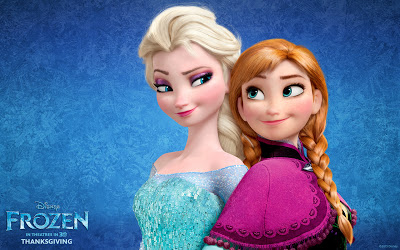 Dec. 29, 2013 “It was soooooooo booooooooo-tiful with snowfwakes evweeewhere wiff fweeedeee (3D) gwasses!” the five-year old’s eyes lit up and widened almost as large as the animated sheroes in the film (ok, admittedly not as huge as “her eyeball is larger than her wrist” dimorphism that body image critics are charging Disney with perpetuating, but BIG nonetheless)…Her seven-year old brother nodded with low-key, nonplussed approval and a thumbs up sign already evoking the ‘rein it in, don’t get giddy’ swagger of a media saturated boy taking cues about masculinity, like a scene from the upcoming film, The Mask You Live In.
Dec. 29, 2013 “It was soooooooo booooooooo-tiful with snowfwakes evweeewhere wiff fweeedeee (3D) gwasses!” the five-year old’s eyes lit up and widened almost as large as the animated sheroes in the film (ok, admittedly not as huge as “her eyeball is larger than her wrist” dimorphism that body image critics are charging Disney with perpetuating, but BIG nonetheless)…Her seven-year old brother nodded with low-key, nonplussed approval and a thumbs up sign already evoking the ‘rein it in, don’t get giddy’ swagger of a media saturated boy taking cues about masculinity, like a scene from the upcoming film, The Mask You Live In.
“Yah, it was pretty cool, the reindeer was awesome and Olaf was hilarious,” he said.
I could’ve sworn there was a “vocal fry” on his pronunciation of hilarious (do seven-year olds even say hilarious the way teens do?)
Screech! Wait. Hold up. Rewind. My media literacy sprite perched on my shoulder scolding “Mind the bias!”
There was a crystalline icicle wonderland splashed all over the giant screen with stunningly magnificent animated landscapes and glistening gowns, yet MY mind’s eye yielded a Disney merchandising executive gleefully rubbing hands together, “The better to market you with my pretties,” while promoting tie-ins everywhere from Norway’s national tourist board and Scandinavian fjords to local ice-skating rinks and Disney’s plethora of products at the parks…
I snapped into a self-induced pummeling of my own unfair bias baggage, having viewed through a jaded lens of researching kids’ media over the years.
I’ve admittedly had a snoot full of narrowcast gender portrayals and Disney princess-ification, ‘kids getting older younger’ (the KGOY effect), and commodification of childhood seeping into even the most private family narratives and milestones of children’s lives, so it’s often hard to put my mental relay on pause, much less erase it to a blank slate in tabula rasa style.
When one is ‘too close’ to the subject matter, it requires conscious mindfulness to boot one’s own projections off the ice in an effort to keep from muddying the pristine white snow of fresh interpretations.
In my case, I had to cast myself in the role of a child with fresh eyes and zero exposure to an industry which is baked into my DNA as a writer/producer creative director turned media analyst.
It’s challenging to purposely flat-line any reaction to story arch, body image, gender portrayal and behavioral cues, socio-emotional subtext, merchandising opportunities, product placement, and even curb the screen scanning for industry insider jokes like Pixar’s famous “Easter eggs” and Disney ‘s ‘hidden Mickey’ carried forth from one film to the next…
“Um, can’t you just watch the film, Amy?” Well, sure.
But with the amount of time I’ve spent researching kids’ media over the years, even if I try to purposely dodge the controversies and responses that surface on the interwebs, and avoid reviews and spoilers to see the film on opening weekend to reduce exposure chatter, 21st century social media makes it nearly impossible to have the ‘first footprint in the new fallen snow’ experience.
Granted, it helped that I went into Frozen ‘cold’ not having ever read The Snow Queen fairytale, which evidently is a VERY loose adaptation, yielding an avalanche of comparative criticism and even boycotts.
But even the most vigilant critical thinkers are not immune to their own hidden bias; all the more important to be self-aware as it can skew and distort content along with our experience of how we walk through the world. See for yourself with Harvard’s Project Implicit a handy little tool that tests your subconscious bias…It’s a great show and tell research lens that takes about ten minutes on the computer for a media literacy exercise to spot your blind spots.
As I sunk into the theater seat to ditch my biases and deconstruct my own self-talk, I thought “This could be a fun…take any initial ‘gut check’ reaction then foist a fresh lens on it to see if I can apply the opposite view with open-ended wonder and possibility.”
Common Sense Media and plenty of others have covered Frozen’s sibling/family angle at length in a tribute to the largesse of love, so instead I’ll pick a couple examples of “bias banter” reactions to gender portrayals to share the practice of seeing both sides of the same topic from a different filter. These are just some basic exercises of dual debates to get in the habit of switching lenses.
Self-Sacrificing Sheroes: My initial reaction to the Elsa character with her magical snow secret was:
“Wow, here we go again with the trope that ‘power’ for a female needs bottled up, controlled, isolated and then banished so it doesn’t ‘get out of hand’ … Give up all you love and hold dear, put the greater good first and slink into snowy sadness to endure your fate and then it’ll all be good? Whaaa? This film is teeming with “Curse of the Good Girl” overtones, I need to re-interview author Rachel Simmons stat!”
More chatter percolated between my ears tumbling forth in my stream of consciousness banter:
“Hmn…they have heavy patriarch flashbacks of King daddy’s wise words not to let people down, societal expectations, the triple bind, and “disease to please” elements from both shero characters….
And what kind of message is that if ice zaps her sister Anna’s head and it’s fixable but if it hits her in the heart she dies?—What does that say subliminally about what we value as a culture with smarts and brains taking a back seat to emotion in terms of girls’ sense of worth? While we’re at it…How the heck can we “raise authentic girls with courage and confidence” in pursuit of happiness, when the underlying message is to put everyone else’s needs first from family, duty, honor and country to crusade for anyone EXCEPT yourself? On the flip side…
Every child I asked mentioned Elsa’s magic (power) and strength (leadership)
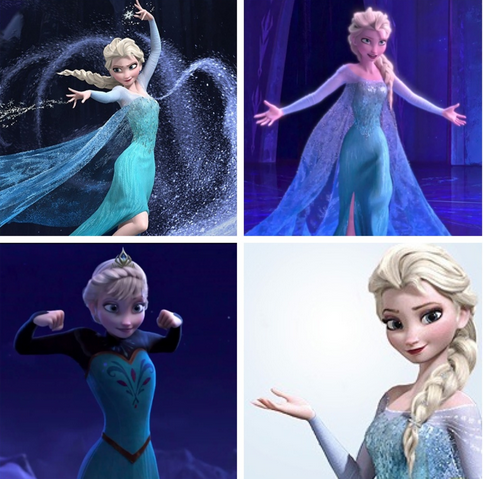 Counter-Point/Strength in Leadership:
Counter-Point/Strength in Leadership:
Like Mulan and some of the stronger, spunkier princess posse of our times (Merida from Brave) Elsa’s snow queen character emotes strength and conviction without the need for any rescuing, prince, kingdom, career or otherwise.
She elicits empathy and endearment from viewers while exuding a powerful grace, dignity and fearlessness in her leadership decisions, so much so that she might as well be the Mandela of the animated world…She puts her principles and her people over her personal plight and there’s never much doubt she’ll triumph on her own terms, not someone else’s.
Let’s face it, Elsa quickly becomes at home in her skin turning powerful adversity inside and out into a healthier worldview for herself brimming with hope and promise for new beginnings.
The fabulous Broadway voice of Idina Menzel belting out the lyrics of the movie’s hit song, “Let it Go” is goosebump-inducing empowerment with an unleashing of personal freedom that is absolutely soul-searing and wondrous!
When she stomps her heel at 2:19 to shatter the ice into a brilliantly unique snowflake it says so much in one second with a feistiness that shifts from ‘survive to thrive’ that it’s breathtakingly beautiful. (I can’t stop singing it myself, and little girls could use a blizzard’s worth of this type of resilience and “bouncebackability” to cope with bullying, body snarking and a plethora of media sidewinders) Excerpt from Let It Go lyrics:
“It’s funny how some distance, Makes everything seem small
And the fears that once controlled me, Can’t get to me at all
It’s time to see what I can do, To test the limits and break through
No right, no wrong, no rules for me, I’m free…”
One more quick example of a two-sided whiplash on the ever-present body image sexualization conundrum so rife in pop culture:
Sexuality vs Sexualization: The transformation of Elsa landed on me as a predictable segue of extremes… transitioning from being covered up head to toe in a Puritan fashion statement to protect her powerful persona, emerging as a loosened up, smokin’ hot, sexy off the shoulder sparkling gown femme fatale (complete with Jessica Rabbit vampy walk-n-wiggle at about 3:17)
I found myself thinking, “Was that really necessary?”
It’s one thing to do the “tumble the hair down” trope at 3:03 with her braid let loose for typical stereotyped shorthand, it’s another to allude to a self-banished sexuality embracing her inner hotness far away, alone on North Mountain, with a wiggle that made girls giggle around me. Seriously, it WAS that noticeable by kids…
What does this say to children about “so sexy so soon” expectations? Why do we need to impart that sheroes transform into ‘hotties’ with come hither Mae West struts, perfect figures and tumble down long tresses to five-year olds…Especially when body image/child dev specialist Dr. Robyn Silverman authored “Good Girls Don’t Get Fat,” a book about appearance cues taking a toll on girls, and reporting bias and body shame is surfacing at age THREE in preschoolers.
Media literacy conversations need to happen earlier and often with these mass media messages blitzing kids on all channels including ‘ambient’ surround sound of the playground.
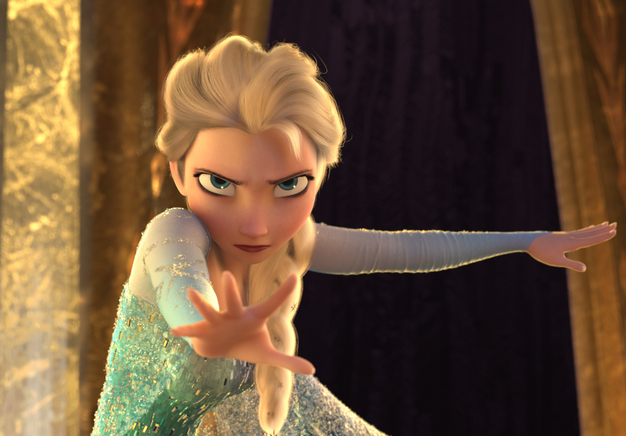 Counter-Point/Brazen Defiance: On the other hand, Elsa’s trip through the sparkle silo emerging as a princess hottie could be just another coming of age common media shortcut to depict an older sibling teenager finding her voice and agency.
Counter-Point/Brazen Defiance: On the other hand, Elsa’s trip through the sparkle silo emerging as a princess hottie could be just another coming of age common media shortcut to depict an older sibling teenager finding her voice and agency.
It’s differs from an exhibitionist style ‘Miley moment’ or a ‘male gaze’ presentation because the character is solo, performing for herself. In fact, she could represent a stance that declares, I OWN my sexuality, every ounce of it and I’ll decide if and when I want to invite anyone else to this party…ever.
Similarly, depending on the audience’s ages and stages her glamorama transformation might be interpreted more as brazen defiance; a child’s ultimate empowerment moment boldly voicing “I’ll be who I want to be” or “You’re not the boss of me.”
That said, there’s a huge difference between sexuality and sexualization to begin with, and hopefully neither lens is on the radar of wee ones. I’m hoping the tiniest tots just took that highly charged energy and transformation into a simplistic ‘whoa, I like her dress and her hair better that way’ or ‘that’s a great song’ or as the five-year old said, it’s all “soooo booootiful!”
Again, glamorization and sexualization are not synonyms nor are indie spirit and innuendo…If mind’s are open and ears are too, age-appropriate springboards and talking points abound for this chat…in fact it’s a ‘co-viewing’ opportunity…
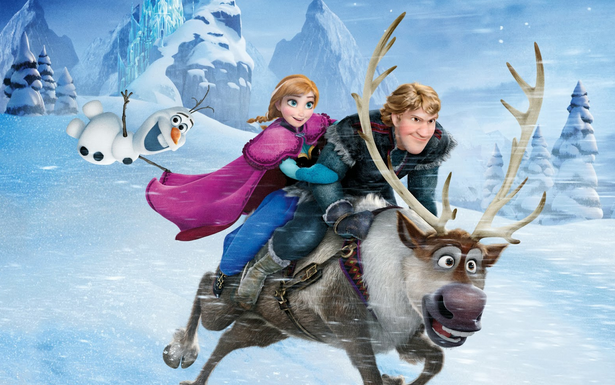 I’ll be addressing some of this in the next post on “Using Frozen as icebreakers: Talking points with kids” sifting their favorite parts on friendship, teamwork, perseverance, and of course humor, applying their voices and views to larger contexts involving socio-emotional health and wellness. (it’s a fun way to use media and inquiry as a safe segue into deeper chats and tougher topics).
I’ll be addressing some of this in the next post on “Using Frozen as icebreakers: Talking points with kids” sifting their favorite parts on friendship, teamwork, perseverance, and of course humor, applying their voices and views to larger contexts involving socio-emotional health and wellness. (it’s a fun way to use media and inquiry as a safe segue into deeper chats and tougher topics).
There are so many aspects of Frozen beyond being an enjoyable visual romp that others have already mentioned, from Disney’s first film with a female director to trope trumping sheroes winning big at the box office…
Overall, I see it as a refreshingly hopeful indicator that mega-media companies like Disney are responding to market conditions that tilt toward resourceful, indie-spirited heroines with brave, boldness and a love of adventure (validated multifold by the Katniss Everdeen box office bonanza appealing to both genders).
Moreover, MALE heroes like Kristoff are finally surfacing out of the snowbanks with more complicated, multi-faceted definitions of masculinity nudging at what it means to be a true hero with an internal compass of values and goodness not just an exterior shell. Yay!
Yes, yes, it’s all ‘baby steps,’ and dollar-driven to fulfill a market need, but so be it. Diversity next, maybe? It sells, Hollywood. Really. Try it!
Visual Credits: Disney screenshots; four-panel montage via Fanpop
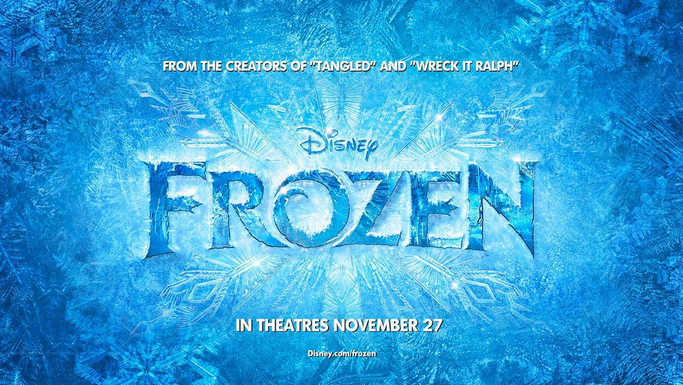
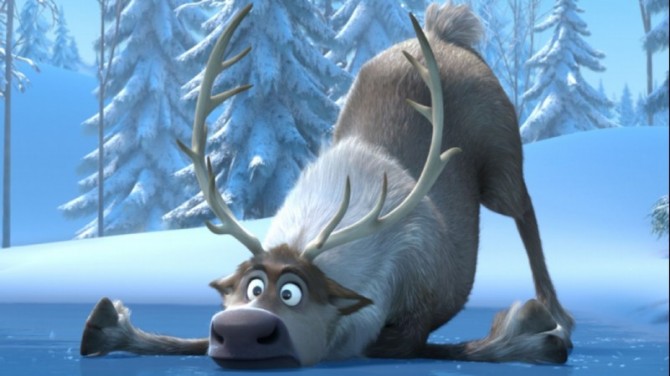








“On the other hand, Elsa’s trip through the sparkle silo emerging as a princess hottie could be just another coming of age common media shortcut to depict an older sibling teenager finding her voice and agency.”
Also keep in mind that Elsa is twenty-one years old at this point in the film, and has had every inch of her skin except her face covered since she was nine, “so as not to harm others.” Her sleeves get longer, her color scheme gets darker and more shadowy. Her father covers her up and keeps her cloistered, indoctrinates her to keep herself cloistered, because her exposure is supposedly dangerous. And yes, the fact that she is dressing up and strutting her stuff very much for her own benefit is relevant too.
Agree with you completely on Elsa’s age/portrayal emerging healthy sexuality and the subtext of breaking free from her prior cloistered life/patriarchal controls and societal sadness of ‘for the good of others’ etc. etc.
It’s just that you have to ALSO contextualize the current pop culture environment, with young 5 year olds ingesting the same cues and being pushed OUT of childhood in ‘so sexy so soon’ mode, robbed of their emerging sense of self BEFORE they even reach puberty often, as I’ve written about so much in posts like this (see full link list of articles about ‘tweens’ 8-12 and pre-adolescent angst of being hijacked into adulthood prematurely, marketed as sexual beings)
https://shapingyouth.org/girl-caught-new-moon-girls-slams-sexualization-of-kids/
I’m ALL for free expression, emerging HEALTHY sexuality, but as you’ll see in the APA task force study, when age compression markets this in ‘too much too soon’ mode without allowing kids to be kids it harms/damages with the exact opposite outcome…which is why developmental adolescence is so key in understanding the media/marketing cues being sent too early.
https://shapingyouth.org/body-blitz-apa-study-shows-harm-of-early-sexualization/